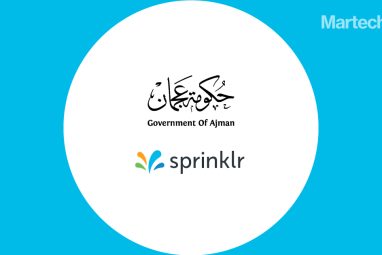Digital Citizens Alliance and White Bullet Release Report on Piracy Websites
Web safety coalition the Digital Citizens Alliance and anti-piracy firm, White Bullet recently released a report, Breaking (B)ads: How Advertiser-Supported Piracy Helps Fuel a Booming Multi-Billion Dollar Illegal Market that details a year-long investigation into how brands and advertising intermediaries help support the operators of illegal piracy websites and apps through the placement of ads. Online criminals who […]
Topics

Web safety coalition the Digital Citizens Alliance and anti-piracy firm, White Bullet recently released a report, Breaking (B)ads: How Advertiser-Supported Piracy Helps Fuel a Booming Multi-Billion Dollar Illegal Market that details a year-long investigation into how brands and advertising intermediaries help support the operators of illegal piracy websites and apps through the placement of ads.
Online criminals who offer stolen movies, TV shows, games, and live events through websites and apps are reaping $1.34bn (£968m) in annual ad revenues, with Amazon, Facebook, and Google among the recognisable brands funding piracy websites and apps, according to the report.
It also states that Amazon, Facebook, and Google are among the most prominent companies found to fund piracy operators, even as these criminals offer risky advertising that exposes consumers to fraud and malware.
Ads for Amazon, Facebook, and Google accounted for 73 per cent of all major brand advertising that appeared frequently on piracy apps during the year-long investigation. The report includes screenshots of an ad for Amazon’s Kids+ on piracy app My Muzik; an ad for Facebook on piracy app YTS Movies; and an ad for Google on piracy app Music Finder. Amazon is given some credit for a recent significant decline in Amazon ads showing up on piracy websites and apps.
The report notes that the combination of piracy, malware, and fraud poses significant risks to internet safety. Consumers that say they visit pirate websites and apps are two to three times more likely to report an issue with malware than those who don’t.
“For too long, online piracy has been treated as a nuisance and not the multi-billion dollar industry that baits consumers to expose them to fraud and malware, hurts the reputation of brands and the overall advertising ecosystem, harms creators, and poses new challenges for law enforcement,” said Tom Galvin, Executive Director of Digital Citizens. “It is time for Fortune 100 companies and the legitimate advertising industry to stop funneling tens of millions of dollars to criminals.”
“This report confirms the simple fact that digital advertising funds piracy,” said Peter Szyszko, founder and CEO of White Bullet. “Despite the alarming scale of the problem, today we are fully armed with AI technologies that can both track illegal activity and advance solutions. That underlying data is the evidence needed to drive action and change. We have already stopped millions in ad spend from funding piracy, reducing the profit of Intellectual Property crime, but clearly more has to be done. By connecting rights owners and the advertising industry with real-time data about piracy risk, all parties can take action.”
Also Read: A Token of Ad-ppreciation
The study found that the top websites offering stolen content generate $1.08bn in global annual ad revenue, with the top five making an average of $18.3m in revenue from advertising. Many of these websites are in a constant state of churn, changing domains and redirecting to avoid enforcement and bypass advertising blocklists.
The top apps that offer stolen content generate $259m in global annual ad revenue, with the top five making an average of $27.6m in ad revenue. These apps remain a smaller piece of the piracy pie than websites, but they are growing at a more rapid pace.
The brands that place the most digital ads overall include many of the Fortune 500 companies, whom the report dubs “major brands”. Due in large part to the proliferation of advertising on piracy apps, these major brands paid pirate operators roughly $100m in the last year to advertise on their platforms. One in four ads on piracy apps is from well-known companies.






